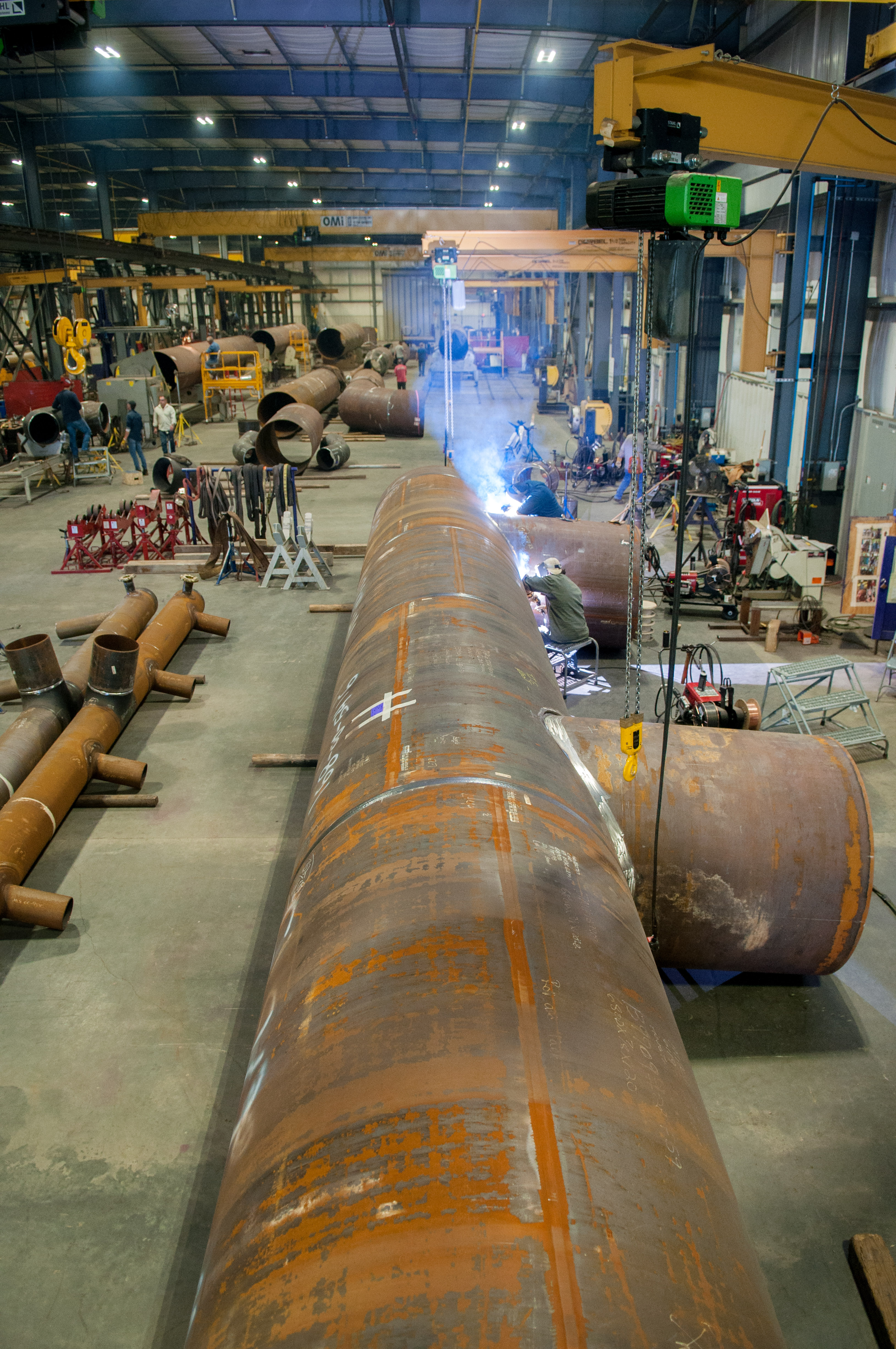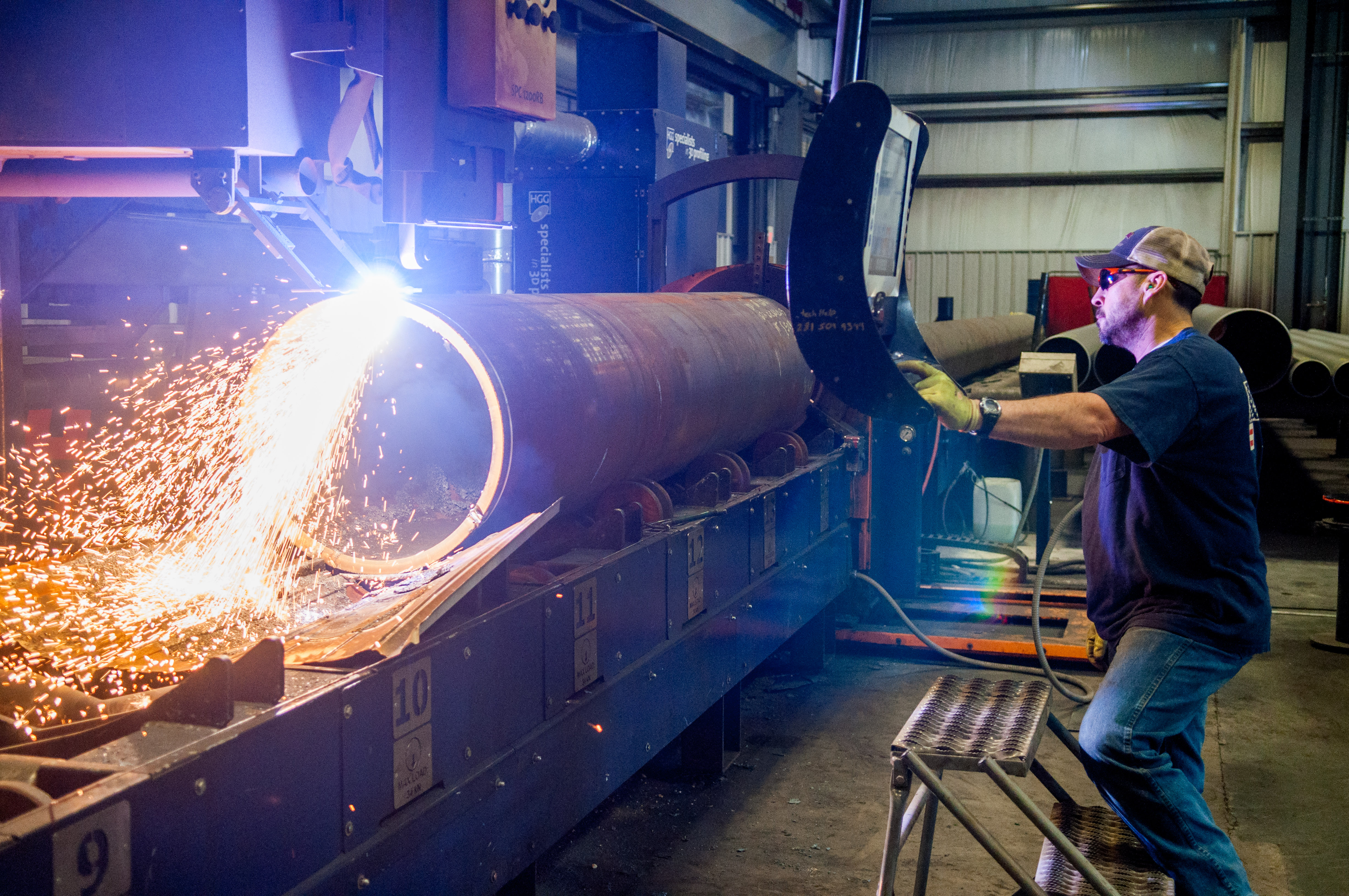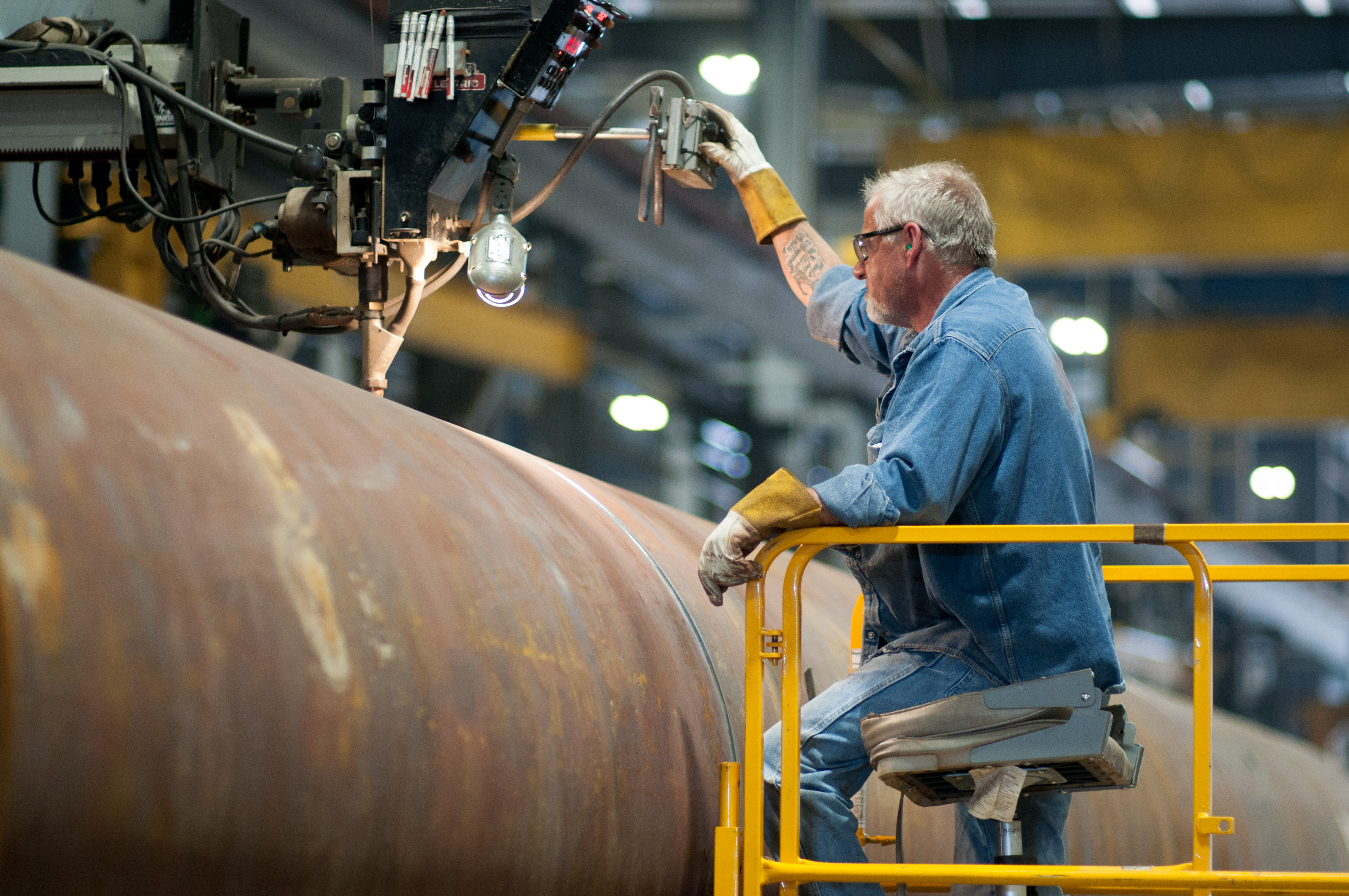It’s Economics 101. Current and expected increases in the demand for pipe, coupled with a sorely deficient supply, are giving Louisiana’s pipe manufacturers and fabricators the confidence to update and expand their facilities.
Much of the current orders for pipe are coming out of the shale plays of Texas and Louisiana, but the impending proliferation of liquefied natural gas (LNG) plants is expected to soon add fuel to the fire. That means pipe suppliers must prepare now for a ramp-up in production if they want to stay ahead of the curve.
It’s a far cry from the dismal days of 2015 and 2016, when the industry suffered from a sharp decline in the oil and gas market. That led to significant and sizeable layoffs for many pipe suppliers. Moreover, volatile commodity prices led to wild fluctuations in the price of steel, an essential input to the industry.
That all changed in 2017 and 2018, as oil prices stabilized, and optimism rebounded over market forecasts. According to the Industry Market Research Report, published in December 2018 by IBIS World, demand for both seamless and welded pipe increased substantially in 2018, a trend that will likely continue through 2019 and 2020 due to a significant rise in oil and gas exploration. This presents unprecedented opportunities for the pipe industry.
Louisiana firms are already in prep mode, and have felt confident enough to open up their pocket books. In February, Baton Rouge-based Epic Piping announced plans to spend up to $40 million to expand its pipe spool fabrication facility in Livingston and invest in a new 24,000-square-foot administrative office in Baton Rouge.

The investment is expected to increase the company’s global production footprint by more than 30% and enable Epic to produce larger and heavier pipe. Its employee count, currently at 900, will increase to more than 2,000. “With the availability of the workforce that we have in this region,” says CEO Remi Bonnecaze, “it makes sense to expand here versus somewhere else at this time.”
The expansion will prepare the company for increased demand for pipe spool products, driven largely by several active and planned projects in the petrochemical and LNG markets. Since its formation in 2014, Epic has grown to become one of the largest heavy pipe fabricators in North America, with three major fabrication facilities‚ including the 268,000-square-foot facility in Livingston.
Then, in March, Stupp Corp. announced that it would spend $22 million to expand and upgrade its two steel pipe manufacturing plants at its north Baton Rouge headquarters. The company is adding assets that will improve efficiency and help it achieve tighter specifications, while also preparing the supplier for greater production capacities in the pipeline market.
The project will result in 128 new jobs and bring Stupp’s employment level near its peak of five years ago. “(The investment) is designed to optimize the capabilities of the assets,” says Chip McAlpin, Stupp’s vice president of corporate strategy and development. “It will include the installation of some new equipment and allow us to process pipe more efficiently. In years of high market demand, we will be able to hit higher performance numbers.” As an added bonus, the investment will enable the company to prepare for increased pipe demand in the Permian Basin and other shale plays.
An urgent need

Eric Smith, associate director of the Tulane Energy Institute in New Orleans, says a grossly inadequate supply of pipelines in the U.S. is the primary catalyst for the demand surge. Sharp increases in petrochemical, crude oil and natural gas production are quickly transforming Louisiana into a net-export state. “We need pipelines to feed these (LNG) terminals and transport crude,” Smith says. “Without the Keystone XL Pipeline, for example, Texas doesn’t have any crude, and I guarantee you if Texas doesn’t get heavy crude, we don’t get their excess.”
One hurdle will be figuring out how to get crude oil from locations outside Texas and Louisiana. As such, momentum is increasing for a route between Cushing, Oklahoma and Corpus Christi, Texas, as well as other points north.
In many locations, pipeline routes have never existed. The Corpus Christi and “Golden Triangle” areas in Texas, for example, are destined to become major export hubs. “You’re building brand new infrastructure to get it there,” says John Clark, Stupp’s chief commercial officer. “These are the big pipelines, but there are also smaller gathering lines and short sections that connect existing infrastructure to new wells.”
That all points to a promising future for pipe suppliers. While Stupp prides itself on being realistic and grounded—given that its work volumes are tied closely to the unpredictable nature of oil and gas—it’s hard to deny that the market has stabilized in the last year. “While it’s not a perfect world, it’s now sustainable,” Clark says. “Even as the demand goes up and down, you have the ability to remain profitable. Therefore, you can justify a large capital expense that’s going to take a while for a payback because you have a little more stability.”
McAlpin predicts periods of higher, more consistent utilization than in previous years, driven by market demand projections and a more competitive posture. “We’ve taken a holistic approach. Efficiency projects are helpful in good times, but they’re critical in bad times.”
A high percentage of Stupp’s business goes to a short list of customers with tall orders. “Nobody’s calling us for 1,000 feet of pipe. They’re buying 500 miles. When business is good, we get a project and it lasts for months.”
Downstream needs

Further strengthening pipeline demand will be the next wave of petrochemical and LNG projects, as owners look for new ways to shuttle oil and natural gas from the shale plays.
Speaking in March at the Louisiana Oil & Gas Association’s Annual Meeting in Lake Charles, Mike Eberhardt, CFO and treasurer of Venture Global LNG Inc., says much of the natural gas needed for the company’s planned Louisiana LNG facilities will come by pipeline from the Haynesville Shale. “We’ll need roughly 2.2 BCF of natural gas for each 10 MTPA facility,” Eberhardt says. The company’s Calcasieu Pass project has received all federal approvals and its other project, in Plaquemines, is expected to receive final FERC authorization in August.
As they strive to meet LNG demand, pipeline owners are at varying stages of completion. Oklahoma-based Enable Midstream Partners recently announced plans to build a 165-mile gas pipeline from northwestern to southwestern Louisiana along the Texas state line. The pipeline would take gas from the Haynesville Shale and other regions and ship it to new LNG export terminals in Louisiana and Texas.
Elsewhere, Tallgrass Energy announced plans to build a crude oil pipeline—the Seahorse Pipeline—from Cushing, Oklahoma, to its planned Plaquemines Liquids Terminal in Louisiana.
Of course, industry’s demand for pipe doesn’t end at the plant gate. Bonnecaze says Epic’s expansion is a reaction to the need by LNG and other plants for larger-diameter, fabricated pipe within their facilities. The expansion will enable the company to handle the bigger pipe, as it buys materials in advance and keeps them in inventory—requiring sufficient space for storage and fabrication.
“If you take a 96-inch-diameter pipe and you put two pieces side by side, you’re taking up a large amount of your floor space,” Bonnecaze says. “Having a greater capacity allows us to produce more product. You tend to see larger diameter pipes and heavier wall thicknesses, particularly for the LNG and the gas plant projects.
“With the greater capacity, we’ll be able to take on more projects, as well as grow our customer base since we can perform more projects at once.”
He expects work volumes to surge in late 2019 and continue into 2020 and beyond. “An LNG plant might take several years to construct because they have individual trains, so there could be multiple years of work with one plant,” he adds. “It stands to reason that there would be a larger amount of work going forward. I think right now it does look promising.”
In addition to its Livingston facility, Epic has a distribution company in Houston, as well as other manufacturing facilities in San Marcos, Texas, and the United Arab Emirates.
Looking for workers
As with most manufacturers, pipe suppliers often struggle to find skilled laborers. That can make it tough when you’re ramping up production in a low-unemployment environment, McAlpin says. “When we’re running more volume, it takes more technicians and inspectors to do it. It takes more people to handle the additional pipe that’s coming through the mill. All those things take additional employees.”
The problem is particularly acute on the skilled trades front, as Stupp is currently in need of qualified and experienced electricians, mechanics and machinists. “We’ve been working with Baton Rouge Area Chamber, Louisiana Economic Development and the Mayor’s office, and we’ve received great support from them,” he adds.
Bonnecaze says Epic currently employs just under 1,000 employees, but that will ramp up significantly in the next six to eight months (including EPIC’s international operations). That includes skilled workers, primarily pipefitters, welders, painters, technicians, safety personnel and others.